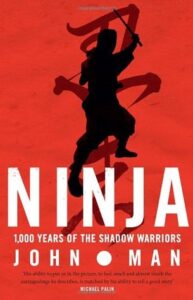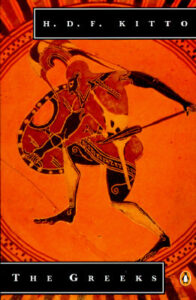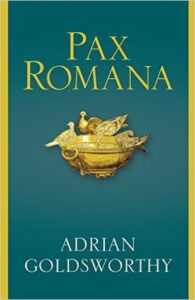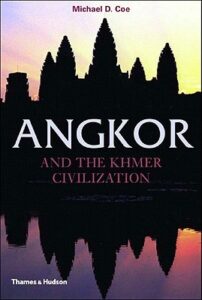Posted February 12, 2019 by Nicky in Reviews / 0 Comments
 Stitches in Time, Lucy Adlington
Stitches in Time, Lucy Adlington
Stitches in Time is a delightful look at the clothes we wear and how they’ve developed over time, from the general fit of women’s clothes down to the specifics of fashion. A lot of it I knew already, partly from the BBC’s Great British Sewing Bee (I cannot wait for a new season of that! and oh hey, it starts tonight!) and partly from other books, but it was still a charming read and a nice break from the awful things that happen in fiction. Adlington writes clearly and sometimes wittily, and it’s a good tour through history in general as well at times, contextualising what exactly drove fashion.
Rating: 4/5
Tags: book reviews, books, history, non-fiction
Posted February 7, 2019 by Nicky in Reviews / 0 Comments
 Ninja, John Man
Ninja, John Man
Ninja is another travelogue-ish, easy to read history of a broad and fascinating topic, in this case the history and afterlife of ninjas in Japanese culture. It felt more scatterbrained than Man’s other books, and was more of a chore to read; I wasn’t really impressed, and although there were some very informative chapters about actual ninjas and what they did, there’s a lot of fluff about traditions and stories about ninjas that didn’t really add up to much.
Of Man’s books, I definitely wouldn’t recommend this; if there’s a better book out there about ninjas and their history, I think I’d actually like to read it, please.
Rating: 2/5
Tags: book reviews, books, history, non-fiction
Posted February 4, 2019 by Nicky in Reviews / 2 Comments
 Breaking the Maya Code, Michael D. Coe
Breaking the Maya Code, Michael D. Coe
This book is, I’ll warn people right up front, also a history of how the Mayan specialists in the West failed to break the “Maya code” for far too long, due to petty jealousies and larger than life characters. Quite often Coe sketches a mini-biography of someone who was involved in the decipherment (or more often, the failure of decipherment); sometimes the biography isn’t so mini.
Still, I think it’s better written than his other book on the Mayans, which I read not that long ago — it certainly worked better for me, anyhow. Perhaps because there are glimpses of the scholars and larger than life characters who put in the work, erroneous though it often was.
The book is illustrated, both with full reproductions and sketches. For me, the full-page spreads of Mayan characters were meaningless, but I’m sure it would appeal a lot to some people to be able to have a crack at it themselves. I know I’m not visually inclined enough, so I tended to skip the examples and such, but they are there and I’m sure more visually inclined people could pick out some of the features Coe discusses.
Rating: 4/5
Tags: book reviews, books, history, non-fiction
Posted January 29, 2019 by Nicky in Reviews / 3 Comments
 Seahenge: An Archaeological Conundrum, Charlie Watson
Seahenge: An Archaeological Conundrum, Charlie Watson
A short and beautifully illustrated book on Seahenge, mostly focusing on the practical issues of how it was made, how it was found, how it was excavated, and the hard facts discovered since from analysis of it. There’s less concentration on the speculations about a ritual landscape in the area, etc, than you find in Pryor’s book on the same site, and a lot more illustrations and photographs. The two complement each other, I think, though I am reading them quite far apart — this is much more ‘just the facts, sir’ than Pryor’s book, while Pryor did the work of interpretation.
If you’re just looking for some background on Seahenge, you’re definitely safe with this one!
Rating: 4/5
Tags: book reviews, books, history, non-fiction
Posted January 21, 2019 by Nicky in Reviews / 3 Comments
 A Little History of Science, W.F. Bynum
A Little History of Science, W.F. Bynum
If you don’t actually know much about the history of science, this book might well be for you; for me, it was painfully obvious, hitting exactly the topics I expected, skimming over what I expected it to skim. A worse crime, however, is that the author simply wasn’t accurate: if you’re going to write a non-fiction book, it’s important to make sure you don’t speak beyond your research.
It does not take much research to find out that Egyptian hieroglyphs and Chinese characters are not pictographic representations of language. (To be perfectly accurate, some of the characters echo in form the thing they name; a cow head shape might mean the word cow, for instance. However, the languages also contain phonetic characters.)
I didn’t read beyond that. On that point, I knew the author was wrong — on a subject that isn’t even a particular area of expertise for me; how, therefore, could I trust him to have done his research about anything else? If we’re talking deeply technical details, that’s different, but it is widely understood that Egyptian hieroglyphs and Chinese characters are not solely logographic. There’s too little time for something where I distrust the research and editing and I’m bored.
Rating: 1/5
Tags: book reviews, books, history, non-fiction, science
Posted January 8, 2019 by Nicky in Reviews / 2 Comments
 The Mycenaeans, Rodney Castleden
The Mycenaeans, Rodney Castleden
This is a mostly textbookish sort of primer on the Mycenaeans: a bit more up to date than the Penguin classic on the Greeks I read recently, by Kitto, but not necessarily in line with the latest ideas as I remember them either. He relies quite heavily on Homer as a historical source; although I know there is certainly some historicity in Homer (the descriptions of armour and other artefacts are often correct in Homer for when we think the Trojan War occurred, rather than for when the epic was written down, suggesting that it does have a good deal of content from being originally composed nearer in time to the actual events), it’s also full of Gods and magic — not usually considered key markers of accurate history writing.
It was basically what I expected from something of a rather textbooky nature, though: dry at times, expanding on some not-necessarily-interesting (to the casual reader, anyway) points, and generally taking a long time to get where it was going. I wouldn’t say it’s a bad book, but I wouldn’t particularly recommend it to those without a deep interest in the details.
Rating: 2/5
Tags: book reviews, books, history, non-fiction
Posted December 16, 2018 by Nicky in Reviews / 1 Comment

The Roman Forum, David Watkin
Most books about the Roman Forum would tend to focus on the Roman period itself, but this rather fascinatingly did a survey through time — not only the classical Roman period origins of the Forum, but the transformations over the years since. The authors strongly feels the importance of seeing the Forum as a living place, somewhere that developed since the time of the Roman Empire, so he spends much time lovingly describing the churches built on the site as well. It’s an approach I definitely appreciate: it’s ridiculous to try and stop the clock of the Forum at the end of the Empire, or to think it was always just one thing throughout that period either. We can’t turn the clock back, so the Forum is best embraced for what it is, rather than attempting to freeze it in time.
I did find this book fascinating, but my one quibble is that the author is almost aggressively against archaeology. He complains frequently about excavation in the forum. And yes, some of it has been done destructively, and I do disagree with trying to tear down anything that was built since Constantine reigned (or whatever your chosen marker point might be). But at the same time, archaeology can be of great value, and I would also be sad if the Forum were to be barred to archaeologists.
Rating: 3/5
Tags: book reviews, books, history, non-fiction
Posted December 13, 2018 by Nicky in Reviews / 0 Comments
 The Greeks, H. D. F. Kitto
The Greeks, H. D. F. Kitto
This book is kind of outdated in its information and definitely so in many of its attitudes, but nonetheless it remains a bit of a classic. I think that’s mostly because of the author’s sheer enthusiasm for the people about whom he writes, their land and their customs. I studied Athenian democracy in excruciating detail for a Classics A Level, but Kitto manages to actually get excited about it, to show all the best things about it and the way the Greeks behaved and thought. It’s mostly about the Athenians, honestly; you can consider the two basically synonymous in this book — Kitto does talk about the Spartans, for instance, but with significantly less approval and interest.
Kitto’s style is mostly engaging due to his enthusiasm, but I do warn that he quotes extensively from various sources (rather than summarising them, he lets them stand for themselves to illustrate his points; this can get tiresome).
Just as a warning, though, if you were thinking of picking this up: though I do think there’s something charming about Kitto’s complete adoration of the Athenian people, he definitely held some less than charming opinions about the place of women and the treatment of slaves — he thought that most things were justified because it allowed the Athenians to have their genuine democracy (which just so happened to exclude much of the population).
Rating: 3/5
Tags: book reviews, books, history, non-fiction
Posted December 6, 2018 by Nicky in Reviews / 0 Comments
 Pax Romana, Adrian Goldsworthy
Pax Romana, Adrian Goldsworthy
Pax Romana is a popular history style examination of the peace imposed by the Roman Empire, and how peaceful it actually was, as well as how it benefitted or oppressed the lands and peoples that fell under Roman sway. Although I called it popular history, it’s not super popularised: the evidence is meticulous, and the pace slow. It’s popular history in the sense of being perfectly comprehensible to the interested outsider to the field, rather than being simplistic.
The overall theory of the book is that the Pax Romana really was, in general, beneficial — and that Rome’s rule really was relatively peaceful and benign, with exceptions being just that rather than the overall rule. A lot of the time the evidence suggests that benignity was due to basically ignoring local squabbles and leaving places to govern themselves with minimal interference, while the legions only marched in for serious matters.
How far do I agree with Goldsworthy’s views, based on the evidence presented? Well, he definitely makes a good case for it, though I think he takes the long view to a great degree and I think there were likely people within the Roman Empire who felt oppressed by it, as well as people who were relatively unaffected by it. I do agree with his view that the Roman Empire wasn’t ruled simply through brutality: it certainly wouldn’t have had the longevity it did, if that were the sole basis, and it wouldn’t have been something people actively wanted to be part of — and it was something people wanted to be part of, more often than not.
It’s definitely a worthwhile look at whether the Roman Empire is really so degenerate as its painted.
Rating: 4/5
Tags: book reviews, books, history, non-fiction
Posted November 20, 2018 by Nicky in Reviews / 0 Comments
 Angkor and the Khmer Civilisation, Michael D. Coe
Angkor and the Khmer Civilisation, Michael D. Coe
One of the complaints in reviews about this book seems to be that it reads like a textbook. It does: if you’re looking for something more casual, a tourist’s guide, then I’m sure there are books out there, but this isn’t it. It’s a scholarly consideration of the ruins of Angkor, the way the Khmer civilisation developed and the context in which it did so. It is illustrated with photographs and drawings, but it’s not a coffee table book for sure.
It can be a bit slow going, but there’s plenty of interest, to my mind. It’s better than the other book I read on Ankor, which was rather focused on this and that ruined building, and this and that inscription: there’s more of a sense of a people behind the monuments, in this book, which was welcome. It’s still slow going, but fascinating all the same for me.
Rating: 3/5
Tags: book reviews, books, history, non-fiction
 Stitches in Time, Lucy Adlington
Stitches in Time, Lucy Adlington








